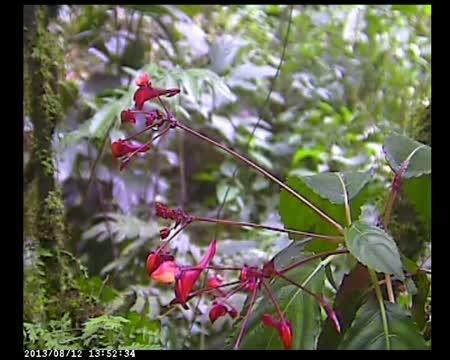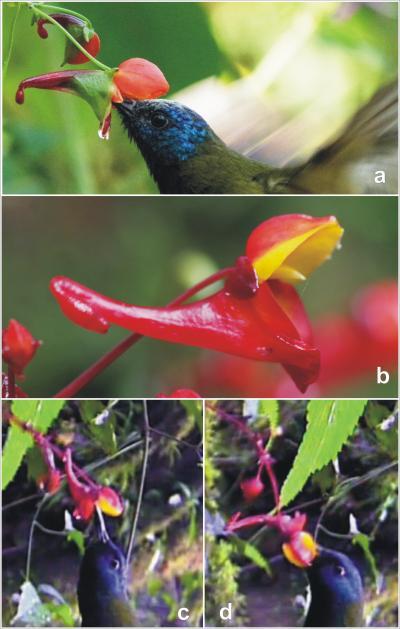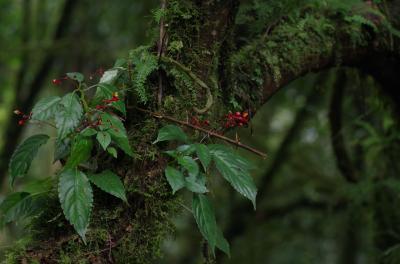"When we saw the recordings from the cameras, we were really excited," says Michael Bartoš of the Institute of Botany at the Academy of Sciences of the Czech Republic, noting that the twisting action happens so quickly it is almost imperceptible to a casual observer. "We did not expect that the fit between flower spur and sunbird bill could be solved in such a simple way. Our enthusiasm was even greater when we realized the adaptive consequence for pollen placement."
I. frithii is an epiphyte. The plant grows on the surface of smaller trees or lower tree branches, with its red flowers protruding out of the foliage, explains Bartoš and his colleague Štěpán Janeček. While the architecture of other bird-pollinated flowers means that pollen can be placed only on birds' bellies or backs, more than 160 hours of video footage showed that the unique shape of I. frithii blossoms allows for placement of pollen on the underside of a visiting sunbird's head or bill.
That seemingly small difference in floral architecture and pollen placement must serve to reduce competition among I. frithii and its close relatives. It also presents a barrier between species. The discovery could have far-reaching implications for the plants' evolutionary past and future.

When a bird forages on nectar, the flower twists as the spur complies with the shape of thebird's bill. In consequence, pollen is placed in an unusual location on the bird's body -- theventral surface of its bill or head.
(Photo Credit: Current Biology, Bartoš et al.)
"Our observations demonstrate that a minute change in floral morphology can effectively overcome constraints resulting from the basal floral architecture early in the group's evolution," Bartoš and Janeček write. "We assume that such adaptations can not only help the plants avoid interspecific competition, but, as the adaptations create strong reproductive barriers, they may also contribute to plant speciation."

(A) All known Impatiens species place pollen grains on the dorsal part of the head; this panel shows a sunbird Cyanomitra oritis during nectar foraging on Impatiens sakeriana. (B) Flower of I. frithii with atypical spur curvature. (C) Sunbird C. oritis inserting its bill into an I. frithii flower that is still in a normal position (snapshot from a video recording). (D) Nectar spur of I. frithii in an inverted position, fi tting the beak shape of C. oritis (snapshot from a video recording).
(Photo Credit: Current Biology, Bartos et al.)

The epiphytic Impatiens frithii grows on smaller trees or lower tree branches.
(Photo Credit: Michael Bartos)
Source: Cell Press